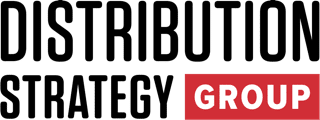Tariffs are in the news, and distributors are bracing for cost increases to ripple through the supply chain. While this is a complex and evolving issue, distributors can take proactive steps now to protect their profits.
Here are five ways to do it:
1. Strengthen supplier and customer communication.
Given the complexity of tariff policy, a good source of information is your strategic suppliers. They are doing the work to follow tariff announcements and calculate how to pass tariff costs to their channel partners. That will likely lead to cost-change notices that require fast action by distributors to implement.
Your customers, meanwhile, are also watching tariff news and may already be asking about expected cost impacts. Transparency and trust are essential.
Action Steps:
- Engage suppliers to understand upcoming cost increases: What, when and how much?
- Clarify their pricing structures — some suppliers may use line-item surcharges instead of product price increases, which could complicate ERP costing, create cost-plus pricing miscalculation and cause accounts payable mismatches for supplier invoices.
- Estimate your exposure: How much of your total sales come from tariffed imports?
2. Streamline your cost-change process.
The amount of work required for the supplier cost-change process is often underappreciated, yet it is crucial in managing margin impact. Speed and accuracy are essential, but some distributors still rely on manual processes that delay updates. Every delay in updating your ERP system means selling at old prices while paying higher costs — an instant profit leak.
Action Steps:
- Make sure your price and cost teams are on top of this and give them extra support.
- Review and improve your cost-change process. Document end-to-end process flow, eliminate bottlenecks, plug profit leaks, automate where possible, and measure results.
- Move beyond the assumption that cost-plus pricing alone will cover your margin risk. Some customers will push back on price increases, requiring negotiation by your sales team that could lead to an increase in price overrides.
3. Manage backlog margin risk.
Orders placed before tariffs take effect may be at risk for unexpected cost increases upon delivery. Confirm with suppliers how this will be handled to avoid any big surprises.
Action Steps:
- Run a report on open orders tied to affected suppliers and product lines.
- Flag high-risk orders and confirm price impact with suppliers.
- Communicate with customers to maintain transparency.
4. Review net prices and contract commitments.
Fixed-price agreements with customers can create margin risks when supplier costs rise unexpectedly. These agreements should be reviewed to determine whether tariff-related costs can be passed through or if pricing commitments need to be renegotiated.
Action Steps:
- Analyze contract pricing exposure. Determine if agreements allow cost pass-through.
- Identify at-risk agreements and develop contingency plans.
- Proactively communicate with customers about price adjustments.
5. Make it a team effort.
Managing tariffs isn’t just a sales and pricing issue; it requires coordination across departments. Everyone knows this will be a challenge, but the distributors who are prepared and handle it well will shine. Taking a cross-functional approach will increase your success internally and will also improve consistency with suppliers and customers.
For example, here are some typical roles and responsibilities affected by tariffs.
- Sales: Quoting, backlog management, supplier/customer relationships, contract compliance, rebate tracking and margin rate.
- Finance: Gross margin analysis, cash flow impact due to higher A/R and A/P, inventory carrying costs and financial reporting.
- Operations: CSR/Order Writer training in how to communicate with customers, inventory cost adjustments and purchasing strategy.
- Pricing: Adjusting system pricing and CSPs, data analytics, monitoring overrides and keeping leadership informed.
The Bottom Line: Stay Ahead of Tariff-Driven Cost Increases
Tariffs don’t just raise costs. They expose profit leaks caused by weak processes. Now is a great time to make price and cost management a priority to protect your profits from tariffs.
Scott Sinning founded Pricing for Distributors to help B2B distributors fix pricing problems to grow profits. He gained expertise as Vice President of Pricing Strategy at Graybar and spent his entire career in the wholesale distribution industry. He frequently writes and speaks on distributor pricing strategy and profitability topics. He is currently welcoming new clients and can be reached via email at scott@pricingfordistributors.com.


